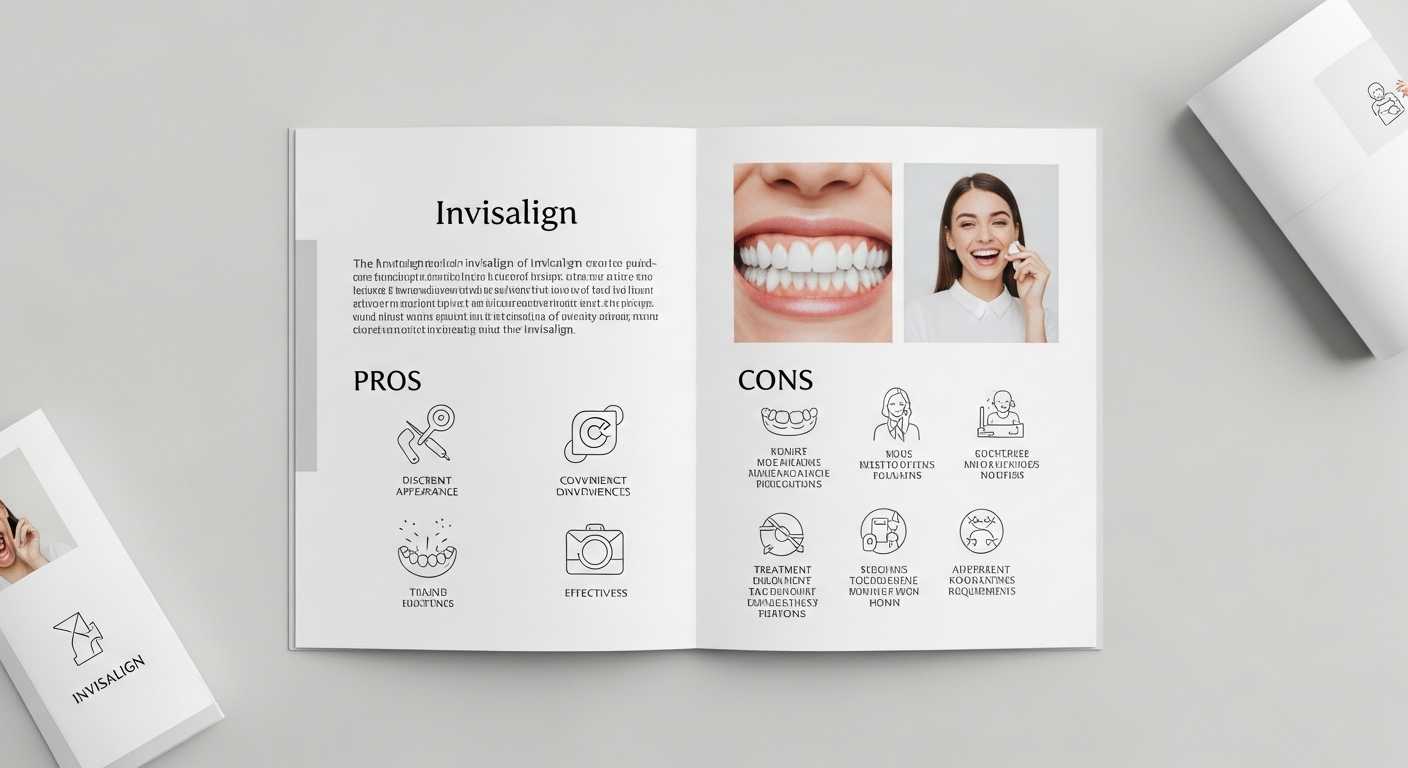Invisalign Advantages and Disadvantages: A Complete Review
Invisalign is a widely popular orthodontic treatment, but does that make it the right choice for you? To make a well-informed decision, it's essential to consider its significant strengths alongside its specific requirements. Here is an objective review to help you weigh the advantages and disadvantages.
The Key Advantages of Invisalign Treatment
The immense success of Invisalign can be attributed to several factors, primarily centered around its aesthetics and convenience.
Appearance and Predictability
- Nearly Invisible: Crafted from clear plastic, the aligners are incredibly discreet. This is the top benefit, particularly for adult orthodontics.
- Watch Your Progress: As you move through treatment, you can see your smile transform without being obscured by metal brackets and wires.
- 3D Digital Preview (ClinCheck®): Being able to view a digital simulation of your final smile before starting is a powerful motivator.
Comfort and Lifestyle Freedom
- Completely Removable: You remove your aligners for meals, meaning there are absolutely no dietary restrictions, which is a major difference from fixed braces.
- Simplified Hygiene: You can brush and floss your teeth normally, without any hardware in the way. You simply need to clean your aligners separately.
- Superior Comfort: The smooth plastic aligners eliminate the risk of irritation and sores inside your mouth caused by metal components.
Treatment Efficacy and Versatility
- Corrects a Wide Variety of Issues: Invisalign is effective for a vast range of orthodontic problems, from simple cases like closing gaps to more complex crowding.
- Highly Precise Movements: The underlying technology facilitates exceptionally controlled and predictable tooth movements for an ideal final alignment.
- Fewer Office Visits: Check-up appointments are often quicker and less frequent compared to those required for traditional braces.
The Disadvantages and Factors to Consider
No orthodontic treatment is without its challenges. Invisalign comes with a set of responsibilities that are crucial to understand before you begin.
Required Discipline and Daily Logistics
- Strict Compliance is Non-Negotiable: This is the most significant "con." For the system to work, aligners must be worn 20-22 hours per day. The outcome is directly tied to your personal commitment.
- Managing Mealtimes: You must be diligent about removing, safely storing, and then cleaning your aligners before and after every meal or beverage (except for plain water).
- Initial Discomfort: Each new aligner set can create a feeling of pressure or soreness for the first day or two as teeth begin to shift.
- Potential for a Temporary Lisp: Some people experience a minor lisp for a few days after starting treatment as their tongue adapts to the aligners.
Potential Need for Technical Add-Ons
- Attachments: To execute more difficult movements, small, tooth-colored composite "buttons" are bonded to some teeth, which can make the aligners slightly more visible.
- IPR (Stripping): To gain space for crowded teeth, your provider might need to polish away tiny amounts of enamel between teeth. The procedure is painless but can be a surprise if you're not expecting it.
- Rubber Bands (Elastics): Similar to braces, elastics may be required to help correct the bite, which temporarily reduces the treatment's discretion.
Treatment Limitations and Cost
- The Financial Investment: Invisalign treatment is often priced higher than traditional metal braces, and the level of insurance coverage can vary.
- Not for Every Case: While highly versatile, Invisalign does have its limitations. The most severe and complex surgical cases might still be better suited for conventional braces.
- Lifelong Retention: This is not a drawback unique to Invisalign, but a rule for all orthodontic treatments. Wearing a retainer (fixed or removable at night) is essential to protect your investment and maintain your results for life.
Conclusion: A Personal Choice
Opting for Invisalign involves balancing its clear benefits in terms of aesthetics and convenience against its genuine demands regarding personal discipline and cost. There is no universally correct decision—only the orthodontic solution that is the best fit for your specific case, personality, and lifestyle.
Ready to start your Invisalign journey?
Find a certified Invisalign provider near you using our interactive map of orthodontists in the US.
Find a Provider
